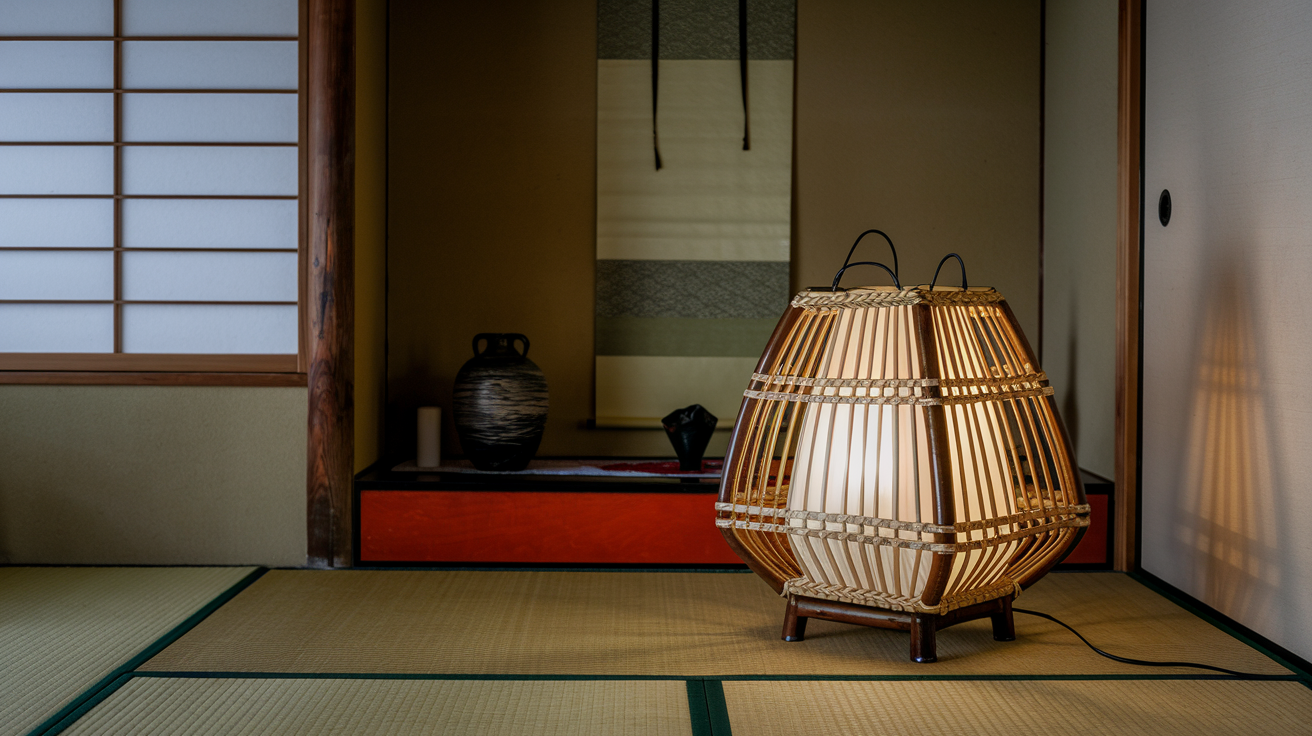Introduction
When it comes to elevating the aesthetic and ambiance of living space, few decor items can rival the sophistication and tranquility offered by a Japanese traditional floor lamp. Rooted in centuries of Japanese craftsmanship, these lamps embody a harmonious blend of functionality and artistry, bringing an undeniable sense of Zen into any environment. This article delves into the rich history, unique designs, and versatile applications of Japanese traditional floor lamps while exploring their growing popularity in modern interiors.
The Origin and Cultural Significance
The concept of the Japanese traditional floor lamp dates back to ancient times, inspired by the enduring principles of Japanese aesthetics—simplicity, natural materials, and understated beauty. These lamps often draw influence from “wabi-sabi,” the Japanese philosophy that finds beauty in imperfection and impermanence.
Initially used in tea houses, temples, and traditional Japanese homes, these floor lamps, or “add-ons,” served functional and symbolic purposes. The warm, diffused light emitted by these lamps was designed to create an intimate, serene atmosphere—a stark contrast to the harshness of modern artificial lighting. Over time, the Japanese traditional floor lamp became a symbol of mindfulness, fostering an environment of relaxation and focus.
Key Features
Japanese traditional floor lamps are renowned for their distinctive design elements and premium craftsmanship. Below are the essential features that set these lamps apart:
- Natural Materials: Most Japanese traditional floor lamps are crafted from natural materials such as bamboo, wood, and washi paper. These materials not only lend authenticity but also contribute to the eco-friendly appeal of the lamps.
- Soft, Diffused Lighting: Unlike glaring overhead lights, these floor lamps offer a gentle, soothing illumination. Translucent washi paper, often handmade, ensures a warm glow that calms the senses.
- Minimalist Aesthetics: Guided by the principle of “Ma” (negative space), the design emphasizes simplicity, ensuring the lamp seamlessly integrates with various interior styles.
- Durability and Craftsmanship :Artisans dedicate hours to meticulously crafting each Japanese traditional floor lamp, ensuring its durability and timeless appeal.
Why Choose for Your Space?
The allure of a Japanese traditional floor lamp lies in its ability to transform spaces while adding cultural depth. Here are some compelling reasons to incorporate one into your decor:
- Create a Relaxing Atmosphere: The warm light emitted by these lamps helps reduce stress and promotes a meditative state. Perfect for bedrooms, living rooms, or meditation corners.
- Enhance Interior Design: Whether your style is modern, eclectic, or traditional, a Japanese traditional floor lamp effortlessly complements and elevates your decor.
- Eco-Friendly Choice: With their reliance on natural materials and energy-efficient lighting, these lamps align with sustainable living principles.
- Celebrate Heritage: Owning a Japanese traditional floor lamp is more than a design choice; it’s a nod to a rich cultural heritage steeped in tradition and innovation.
Popular Types
Here are some of the most iconic types of Japanese traditional floor lamps that cater to diverse tastes and preferences:
- Andon Lamps: Andon lamps are the epitome of traditional Japanese lighting. With their wooden frame and washi paper panels, they exude timeless elegance.
- Shoji Floor Lamps: These lamps mimic the design of traditional shoji screens, featuring a grid-like wooden structure and washi paper panels.
- Bamboo Floor Lamps: Bamboo symbolizes resilience and prosperity and is a favored material for crafting intricate lamp designs.
- Contemporary Fusion Lamps: Modern interpretations blend traditional materials with sleek designs, appealing to minimalist sensibilities.
Placement Ideas
The strategic placement of a Japanese traditional floor lamp can amplify its impact. Here are some ideas:
- Living Room: Position the lamp near a seating area to create a cozy and inviting ambiance.
- Bedroom: Place it beside the bed for a tranquil lighting option that is perfect for winding down.
- Hallway or Entrance: Use the lamp as a statement piece to welcome guests with subtle elegance.
- Meditation Space: Incorporate it into a zen corner to enhance the calming environment.
Maintenance Tips
To ensure the longevity of your Japanese traditional floor lamp, follow these care tips:
- Clean Gently: Use a soft cloth to dust the lamp regularly. Avoid abrasive cleaners that may damage the washi paper or wood.
- Avoid Direct Sunlight: Prolonged exposure to sunlight can cause the materials to fade or weaken.
- Handle with Care: Given the delicate construction, always handle the lamp carefully during cleaning or relocation.
- Replace Bulbs Wisely: Opt for energy-efficient LED bulbs that provide a warm glow similar to traditional lighting.
Modern Adaptations
With evolving design trends, the Japanese traditional floor lamp has undergone modern adaptations, ensuring its relevance in contemporary interiors. Designers have introduced features like adjustable brightness, USB charging ports, and smart home compatibility. These innovations marry tradition with technology, offering convenience without compromising authenticity.
Conclusion
The Japanese traditional floor lamp is more than just a lighting fixture; it is a timeless piece of art that infuses any space with warmth, tranquility, and cultural richness. Whether you’re an avid admirer of Japanese decor or simply seeking a unique addition to your home, these lamps promise unparalleled elegance and functionality. Explore the beauty of Japanese traditional floor lamps today and let their serene glow transform your living space.
FAQs
1. What makes a Japanese traditional floor lamp unique?
Its use of natural materials, minimalist design, and soothing light set it apart from other types of lighting.
2. Are they eco-friendly?
Yes, they often use sustainable materials like bamboo, washi paper, and energy-efficient lighting.
3. Where can I place it?
These lamps work well in living rooms, bedrooms, meditation spaces, and hallways.
4. How do I maintain it?
Regular dusting, avoiding direct sunlight, and using suitable bulbs can ensure its longevity.
5. Can these lamps fit in modern interiors?
Absolutely. Modern designs often blend traditional elements with contemporary styles.
6. What are the popular types of it?
Andon lamps, shoji lamps, bamboo floor lamps, and modern fusion designs are favorites.
